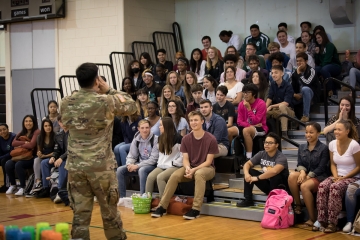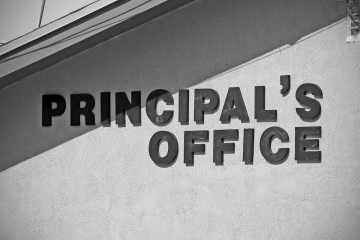This summer the National Working Group on Advanced Education reported what many educators in the United States already know and experience: that the United States has been wasting an enormous amount of human potential and that many students—including “advanced learners, striving pupils, and those with untapped potential”—are not being sufficiently challenged. The challenge is clear and the stakes are high. In American schools, closing these excellence gaps needs to be a top priority to ensure that all students reach their full potential.
The crisis is most acute for students who attend schools that are segregated by race and class. When racially segregated schools primarily serving low-income, Black, and Hispanic students are compared with more affluent districts that primarily serve White students, the discrepancies are stark and severe.
But what’s happening in those schools that are economically and racially integrated? On the face of it, the landscape looks promising. Indeed, a recent study of the impact of segregated schooling on New Jersey high school students found that overall participation in advanced coursework in integrated schools was slightly higher than in White isolated institutions.
Yet those of us who work in integrated schools should not take a victory lap just yet. After all, what’s the benefit of an integrated school environment if the classrooms and educational experiences within the school itself are diminished by excellence gaps?
In this sense, my school stands as an excellent case study of how educators are working to narrow excellence gaps and promote equity.
First, some background. Red Bank Regional High School (RBR), of which I’m superintendent, primarily serves three towns in suburban New Jersey—two affluent, majority-White suburbs and one larger and much more racially and economically mixed town that also serves as a regional hub. In addition, students from a number of other towns attend to participate in specialized academy programs. By any standard, the student body of Red Bank Regional is demographically diverse and is a point of pride for the district.
The depth and breadth of RBR’s offerings are also impressive and include extensive advanced coursework options, specialized academies, and a range of dual enrollment courses. The most recent New Jersey Department of Education School Report Card indicated that over 60 percent of juniors and seniors take at least one Advance Placement (AP) or International Baccalaureate (IB) course. Access to these programs is open, meaning that students who are not recommended can “waive” into these courses.
Despite these strengths, a number of discrepancies in connecting students to accelerated learning options demand attention. In a recent internal assessment, White students composed 57 percent of our school’s total school population but represented 74 percent of AP and IB enrollment. Black students, who constitute 5 percent of the total population, represented slightly more than 3 percent enrollment in these programs. Hispanic students make up 35 percent of our population, but represent only about 19 percent of students in AP and IB classes. Economically disadvantaged students are also underserved. About 25 percent of our students were eligible for free or reduced-price lunch, but they only constituted about 11 percent of the students taking AP and IB courses.
To address these gaps and promote equity and excellence for all, Red Bank Regional has been applying many of the recommendations put forward by the National Working Group on Advanced Education. We’ve introduced universal screening for first-year students to identify talents and abilities that might have been overlooked. In place of rigid tracking, an embedded honors program has been put in place in English and history classes for freshman that serves as an on-ramp to access enrichment opportunities as the academic year proceeds. We also tapped into staff expertise and partnered with experts to strengthen teaching practice, especially in regard to integrating differentiated instruction into the instructional program. Finally, administrators, teachers, and counselors see themselves as talent scouts, not gatekeepers, in promoting access to accelerated learning opportunities and erring on the side of inclusion. At the same time, we continue to promote culturally responsive practices, including the infusion of materials, topics, and curricula that reflect the backgrounds of our students.
This year we are expanding efforts to involve everyone in the front-line work of improving teaching and learning. As part of our professional develop plan, all teachers are now participating in instructional rounds visits to classrooms to gain knowledge and provide actionable non-evaluative feedback to colleagues on instructional practice, student engagement, and content. Finally, we are moving ahead to develop an excellence-and-equity policy that will ultimately have the same legal and moral standing as the other policies that govern the district and serve as a binding and enduring commitment to equity, excellence, and inclusion.
We are proud of this work and are confident that the reforms should bear fruit. But despite these improvements, gaps will remain until we address these challenges: How do we expand access and ensure success at scale, especially for those students who might be hesitant to take an accelerated course in the first place or see these courses as “not for them” because of their race, ethnicity, or economic background? How do we avoid setting kids up for failure who might need academic support and encouragement to take the jump into accelerated classes?
A big part of the solution is strengthening students’ academic foundation in the first and second year of high school. At RBR, below-grade-level courses in math and science have been phased out. In English language arts (ELA) in grades nine and ten, we strengthened our programs and expanded support for teachers, including the implementation of the College Board’s Pre-AP framework for monitoring student growth and progress. ELA teachers have exemplified the benefits of teamwork and made it clear that an effective response to excellence gaps requires a combined vision that unites teachers across all grade levels.
We’ve also come to realize that a great resource is the expertise of our AP and IB teachers themselves, who have been achieving remarkable success with students who enter these classes at a wide range of starting points. In this sense, RBR is not different from most American high schools in which a massive expansion of participation in AP programs has happened. As is the case in those places, participating in AP or IB coursework is not limited to academic superstars. While we’ve seen participation expand among all groups, especially among students from White households, the overall level of student achievement has not declined. In 2021–22, close to 30 percent of the juniors enrolled in AP Language and Composition, for instance, and over half the students enrolled scored between 390–519 on the evidence-based reading and writing section of the PSAT in which a score of 460 represents grade-level proficiency. When other college-level ELA programs are included, well over 60 percent of RBR juniors and seniors access these courses, and the vast majority achieve success.
This reality and the remarkable success of college-level English language arts programs at RBR has encouraged the adoption of an “all in” strategy that aims to have all students take at least one of the six advanced ELA courses offered. While it’s obviously designed to promote participation, the strategy is not a “one size fits all” approach. For example, qualified students can begin taking these courses in the sophomore year. Other students may not take on the challenge until their senior year.
This ambitious goal might be the one of the most impactful steps we take to close excellence gaps because it unites our efforts in support of a clear goal and promotes a culture of encouragement and inclusion. Above all, the strategy neutralizes the most dangerous academic toxin in a diverse school setting: namely, that certain school programs are only appropriate for certain kinds of students from certain kinds of backgrounds. As Chester Finn and Andrew Scanlan observed in their 2019 book, Learning in the Fast Lane, when done well, expanded AP and IB participation can be part of broad strategy to change mindsets, remove psychological barriers, and commit the entire school community to ensuring that students succeed.
In sum, the goal is to replicate at scale what one student experienced last year in her AP English class. In a letter to the teacher, a parent said, “Your class is the first advanced class she has ever taken.... She was scared, nervous, and so insecure in the beginning of the year, but with your guidance and compassion, she thrived. She is leaving her junior year with so much more confidence academically, and this is in part because of you. You made her feel like she belonged in your class, and for that I am forever grateful.”
Not everyone is enthusiastic about the reforms being implemented. Notably, opposition has been most intense from critics who view actions to promote excellence and equity as unneeded or even harmful to those students who are already receiving the benefits of advanced learning opportunities. A thoughtful reply comes from the National Working Group’s final report: “Equity, done right means opening up advanced education to all students who could benefit from it. And excellence done right means doing the hard work to help all students achieve at high levels—not just the students who come to school with great advantages.”
Addressing equity gaps is complex and challenging in all schools. This reality also applies to schools like Red Bank Regional that are fortunate to serve a diverse student population. Building a wider, more diverse pipeline of advanced learners mandates a multifaceted approach, including improved screening, targeted support, and a commitment to promoting a school culture writ large that prioritizes inclusion and encouragement. At Red Bank Regional, we are trying a number of approaches but all share this assumption: Accelerated learners, academic strivers, and students with hidden talents come from all races, ethnicities, and economic backgrounds.
Note: Jessica Verdiglione provided the expert data analysis for this piece. Verdiglione oversees data, assessments, and professional development for Red Bank Regional.








